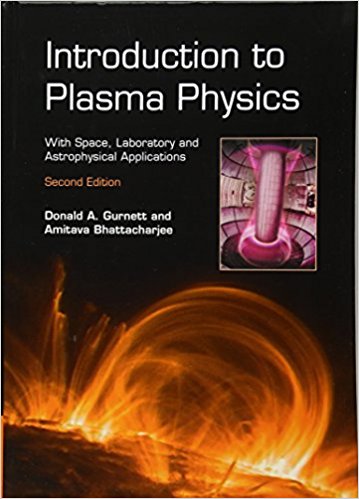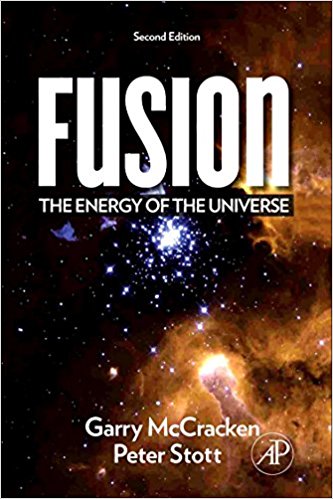This Web Site is a convenient resource for APPH E6102y. (I will also link to materials on the Columbia CourseWorks site for APPH E6102y.)
Lecture Date |
Subjects |
Wed
Jan 22 |
|
Mon
Jan 27 |
-
Collisionless Damping of Nonlinear Plasma Oscillations
|
Wed
Jan 29 |
|
Mon
Feb 3 |
Read "The collisionless nature of high-temperature plasmas,"
by T. M. O’Neil and F. V. Coroniti, Rev. Mod. Phys. 71, S404 (1999) [https://doi.org/10.1103/RevModPhys.71.S404]
Papers to Discuss:
- "Collisionless Damping of Electrostatic Plasma Waves," J. H. Malmberg and C. B. Wharton, Phys. Rev. Lett. 13, 184 (1964); [https://doi.org/10.1103/PhysRevLett.13.184]
- "Landau Waves: An Experimental Fact," H. Derfler and T. C. Simonen,
Phys. Rev. Lett. 17, 172 (1966); [https://doi.org/10.1103/PhysRevLett.17.172]
- Some Investigations of Nonlinear Behavior in One-Dimensional Plasmas Physics of Fluids 11, 1506 (1968); [https://doi.org/10.1063/1.1692136] J. M. Dawson, R. Shanny
- "Nonlinear Development of the Beam-Plasma Instability," Physics of Fluids 13, 2422 (1970); [https://doi.org/10.1063/1.1693255] W. E. Drummond, J. H. Malmberg, T. M. O'Neil, J. R. Thompson
In-class problem: electrostatic plasma wave in a warm plasma.
Lectue 4 Notes |
Wed
Feb 5 |
T.B.D. |
Mon
Feb 10 |
Assignment:
Ch. 11: Quaslinear Theory: Lecture Notes 5
Email titles and citations for at least two published articles related to wave-particle interactions in plasma.
Include with your email a proposed title and subject of your midterm paper.
Academic Writing for Graduate Students (3rd Edition) by John Swales and Christine Feak is a very nice workbook for graduate student writing practice. Here's a chapter on writing research reports. |
Wed
Feb 12 |
Lecture Notes 6
A simple Mathematica notebook for the standard map. Please take note of Tom Stix's textbook titled Waves in Plasmas (2nd Edition). Chapter 16 is all about quasilinear diffusion. |
Mon
Feb 17 |
Read Ch. 10: Wave particle interactions in a magnetized plasma
Lecture 7 Notes |
Wed
Feb 19 |
Lecture 8 Note: Whistler Waves and Cyclotron Heating
Old notes (1988) about wave-energy density in a disperive medium.
In-class worksheet: electromagnetic ordinary wave |
Mon
Feb 24 |
Lecture 9: Alfvén Waves |
Wed
Feb 26 |
Nonlinear Wave-Particle PIC Simulation: Mathematica Notebook (14-Plasma_PIC-2020.nb)
|
Mon
Mar 2 |
Lecture 10: Discussion of scientific papers
From the 2016 DPP Meeting:
Quasilinear diffusion coefficients in a finite Larmor radius expansion for ion cyclotron heated plasmas, Jungpyo Lee, John Wright, Nicola Bertelli, Erwin F. Jaeger, et al. Physics of Plasmas 24, 052502 (2017); [https://doi.org/10.1063/1.4982060]
Energetic particle modes of q = 1 high-order harmonics in tokamak plasmas with monotonic weak magnetic shear, Zhen-Zhen Ren, Feng Wang, G. Y. Fu, Wei Shen et al., Physics of Plasmas 24, 052501 (2017); [https://doi.org/10.1063/1.4981935] |
Wed
Mar 4 |
T.B.D. |
Mon
Mar 9 |
Lecture 11 Notes
DUE: Abstract, Outline, and Approach for your Midterm Paper |
Wed
Mar 11
|
Lecture 12
Discussion: Midterm Papers |
Mon-Fri
Mar 16-20 |
Classes Canceled: Academic Recess
|
Mon
Mar 23 |
Midterm Assignment DUE:
Submit by email a "journal article" on your selected topic of wave-particle interactions.
Your paper must have an abstract, introduction, description of physics, summary and reference list.
Lecture 14: Introduction to Low-Frequency Fluctuatuions and Transport |
Wed
Mar 25 |
Lecture 15 |
Mon
Mar 30 |
Lecture 16: Introduction to Drift Waves |
Wed
Apil 1 |
Lecture 17: Collisional Drift Waves
Read the classic and important paper (50th anniversary year):
Collisional Drift Waves—Identification, Stabilization, and Enhanced Plasma Transport
H. W. Hendel, T. K. Chu, and P. A. Politzer
|
Mon
Apr 6 |
Lecture 18: Collisionless Drift Waves
See:
"Physical Mechanism for the Collisionless Drift Wave Instability," by D. M. Meade, Physics of Fluids 12, 947 (1969); [https://doi.org/10.1063/1.1692583] |
Wed
Apr 8 |
Lecture 19: Electromagnetic Response: What is parallel electric field? |
Mon
Apr 13 |
Lecture 20: Introduction to Interchange, Ballooning, and Kink Modes
Assignment:
Email titles and citations for at least two published articles related to two-fluid low-frequency dynamics in a torodial magnetized plasma.
Include with your email a proposed title and subject of your midterm paper. |
Wed
Apr 16 |
T.B.D. |
Mon
Apr 20 |
Lecture 21: Reduced MHD in a Large Aspect Ratio Tokamak
Reference: Chapter 5 of Boris Kadomtsev's Tokamak Plasma: A Complex Physical System |
Wed
Apr 22 |
Lecture 22: Grad-Shafranov Equilibrium (and More Kink Modes) |
Mon
Apr 27 |
Lecture 23: Kink Mode Calculations
See also Mathematica notebook: Kink_Mode_Plasma-II.nb |
Wed
Apr 29 |
Lecture 24: Resistive MHD and Tearing Modes
and Introduction to Resistive Wall Modes (RWM) |
Mon
May 3 |
Final Assignment DUE (but students may request extensions):
Submit by email a "journal article" on your selected topic of two-fluid low-frequency dynamics in a torodial magnetized plasma.
Your paper must have an abstract, introduction, description of physics, summary and reference list. |

